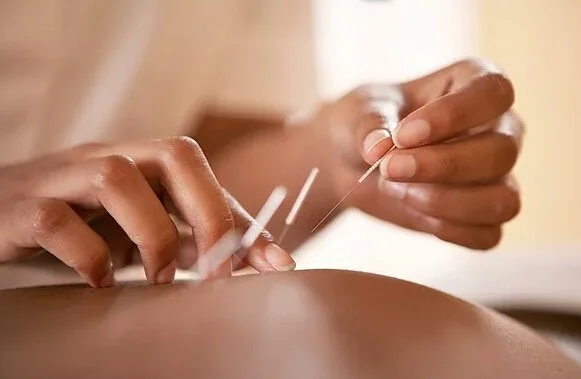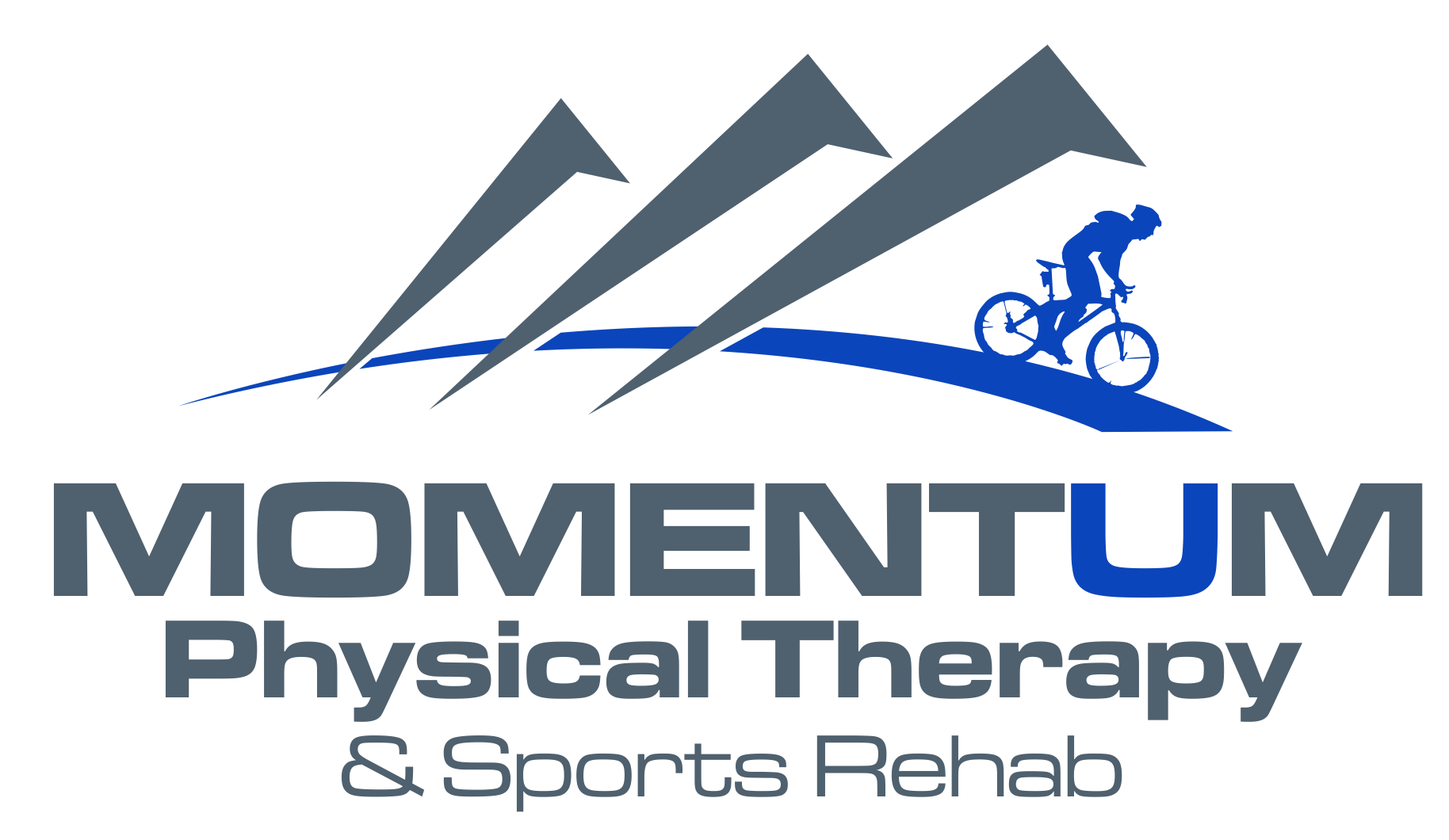What is Intramuscular Stimulation (IMS) in Physiotherapy?
Have you heard of Intramuscular Stimulation (IMS) before?
Maybe a friend told you that you HAVE to try IMS because it did wonders for them?
My name is Stephen Uhrbach and I am a physical therapist at MOMENTUM Physical Therapy & Sports Rehab in Okotoks. I have been using IMS on my clients (with HUGE success stories) for nearly 10 years.
I am here today to tell YOU all about what IMS is so you can decide if it is a treatment that you want to try.
Before we dive into what IMS is, I want you to meet my client Stacey.
Stacey came to me in the spring of 2017 with unrelenting hip pain. Turns out she had advanced hip osteoarthritis and wanted to try everything but IMS.
She was afraid of needles and heard that IMS HURT!
Who would blame her. Putting needles into the body didn’t sound fun.
After a few conversations where we talked about IMS, what it entailed, and how she would benefit she decided to give it a go.
Guess what…
IT HELPED!
LIKE IT REALLY HELPED!
And now, everytime she gets a little sore, the first thing she asks for is IMS.
Today I want to tell you about IMS physiotherapy so you can learn about what it entails and decide if it would help kickstart the recovery you deserve.
What does IMS stand for and how does it work?
IMS stands for Intramuscular Stimulation.
When performing IMS, a trained physiotherapist inserts an acupuncture needle into a tight and shortened band of muscle (or a trigger point).
Muscles can become tight and develop trigger points if they are injured, are compensating for an injury at another body location, or if they are receiving abnormal signals from the spine and nerves.
After the physiotherapist locates a trigger point, the acupuncture needle is inserted into the trigger point. You should feel a deep ache or a twitching sensation as the physiotherapist moves the needle up and down through the tightened band of muscle. After the therapist has sufficiently stimulated the tightened muscles, the needle will be removed. Your practitioner may repeat this process a number of times through different trigger points.
This process causes the muscle to “reset” and relax - thus reducing your pain and improving your ability to move.
How deep do the needles go into the muscle during IMS?
The depth of the IMS needling completely depends on the depth of the trigger point. Some muscles (like in the jaw or forearm) are very close to the surface of the skin. In these instances, needling depth is relatively superficial and can be 1-2 cm. Other times, such as in the hip or calf, the trigger points are deeper and can be 5-10 cm below the skin.
Do you need special training to perform IMS?
Yes!
In order to perform IMS, you need to have an advanced level of post secondary training and understanding of the human body.
Physiotherapists who perform IMS will first need their Masters in Physical Therapy to begin training in IMS.
Physiotherapists will then take advanced post university training that includes self study, hands on training/experience, and formal examinations.
Once a physiotherapist has completed all the necessary training and passed the required examinations associated with learning IMS, they will receive approval from the Alberta College of Physical Therapists to perform the advanced technique “use of needles in practice”.
Do you inject anything into my body when performing IMS?
No.
IMS is a form of dry needling. With dry needling, there are no medications injected or associated with the needles.
IMS uses small, flexible, solid needles that are not capable of delivering medication of any form to an individual.
Is IMS safe?
Absolutely.
First, your therapist will screen you to make sure that you are a safe candidate for dry needling. In our practice, we will not needle someone who is pregnant (due to the risk of inducing labour) or had surgery in the last 12 weeks.
Next, your therapist will ensure that they are using a clean needle technique. This involves using single use sterile needles, cleaning the needle site of the body with a special rub called Stanhexadine, the continuous wearing of gloves, and the safe disposal of used needles.
Finally, your trained therapist will review with you the area that they will be needling and how they will ensure your safety. Some areas (like the gluteal muscles) are extremely safe to needle. Other areas (such as along the spine) are safe to needle as long as the technique used by the practitioner is sound.
The most common side effect of IMS is some minor bruising and aching. On rare occasions, some people feel tired after a IMS session and this usually resolves in a few hours.
All in all, the cleaning, screening, and proper technique is what makes IMS safe.
Does IMS hurt?
When IMS is used to release trigger points, you can expect to feel a deep ache and a twitch from each needle point. This sensation is not necessarily painful but feels like the muscle is momentarily cramping and aching. This sensation lets us know that your muscle had a trigger point in it that would be causing movement restriction and pain.
Once the IMS session is over, you might feel sore and achy for 24-36 hours. This is normal and expected.
As long as you keep moving around, the achiness should fully resolve leaving you feeling loose and with reduced pain.
If your muscle does not have a trigger point in it, the needling should be pain free.
What kind of results can I expect with IMS?
With IMS, you can expect two main positive results.
First, as you progress through treatment, you should expect to feel increased movement. As the IMS loosens up the tight bands of muscle, you should begin to experience increased mobility at your joints as your muscle tightness subsides.
Second, you should feel significant reductions in pain. As the IMS loosens up muscle and reduces compressive loads on joints, ligaments, and nerves so you should start to feel your pain resolve.
Once your pain has gone down and your body is moving better, you will be well on your way to a full recovery.
How long does it take to get better?
Most often people will report improvements after their first session of IMS.
Typically we will see good results after 3 to 4 sessions with treatment courses usually lasting a total of 8-10 sessions.
What do I need to do after a session of IMS?
After receiving IMS at your physiotherapy appointment, make sure that you drink lots of water, move about, and heat the needle site. This will help quickly reduce your soreness. Your physiotherapist should also provide you with some exercises specific to your injury.
What injuries will it help?
There are many injuries that IMS will have a profound positive effect on. Tennis elbow, rotator cuff strains, headaches, whiplash, low back pain, muscle strains, and hip pain are very common sites that we treat everyday with IMS.
Generally speaking, any injury that involves tightened or shortened muscles will benefit from IMS physiotherapy treatment.
Click this link to review another blog that we wrote recently specifically talking about 7 injuries we treat daily with IMS.
What to do next?
There you have in.
A crash course in what IMS is.
Still wondering if IMS will work for you? Tired of living with an ache or a pain that just won't go away?
Give us a call at MOMENTUM Physical Therapy in Okotoks and we would be happy to review your injury to determine if you would be a good candidate for IMS as part of a physiotherapy treatment program. You can reach us at: 403-982-5600, Monday-Friday from 7am - 8pm.
Not ready to commit yet, fire us an email with any questions about IMS and one of our physiotherapists will reach out to you to discuss your case.
Frequently Asked Questions
Is IMS a form of dry needling?
Yes! Dry needling refers to a group of treatment techniques in which a needle is used to stimulate a tissue to promote muscle relaxation or healing. Wet needling refers to techniques in which a substance (such as a medication or vaccine) is administered to a person through the needle.
How long does it take for IMS to work?
Intramuscular stimulation (IMS) is extremely effective at loosening tightened muscles and reducing pain after your first session. We expect to see some improvement after the first session but generally 3-4 sessions are required to ensure that IMS is working with most injuries resolving after 8-10 sessions.
What should I do after IMS treatment?
After completing a IMS session, it is important to drink lots of water, remain active, and heat the needle site. This will help reduce your soreness after your session. Once the soreness from the needling subsidies (usually after 24 hours), you should experience reduced pain and increased mobility.
Momentum Physical Therapy, located in Okotoks, Alberta, is ‘Here for YOU’.
If you are experiencing any pain or injury, or you just want to learn more about how IMS or dry needling can help heal your pain, don’t delay and call Momentum Physical Therapy today. You can reach a registered physiotherapist at Momentum by calling 403-982-5600. We look forward to helping you feel you best again.






